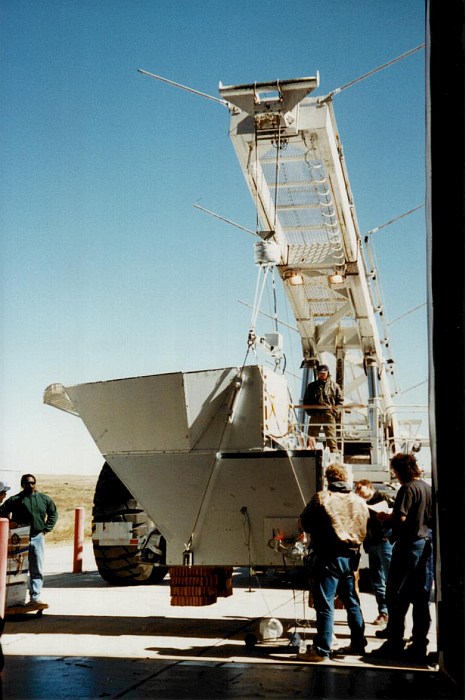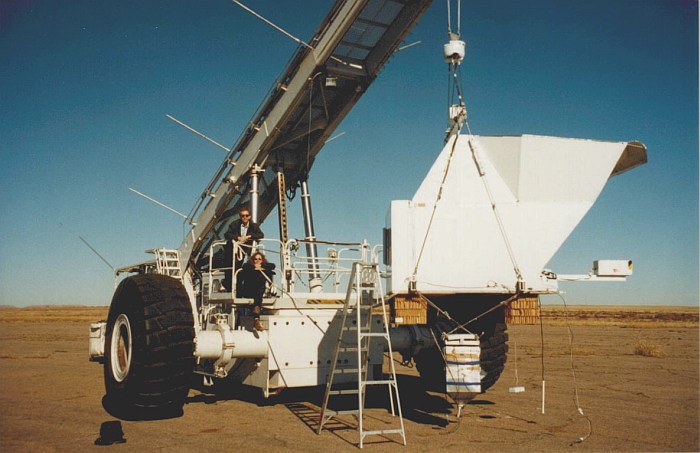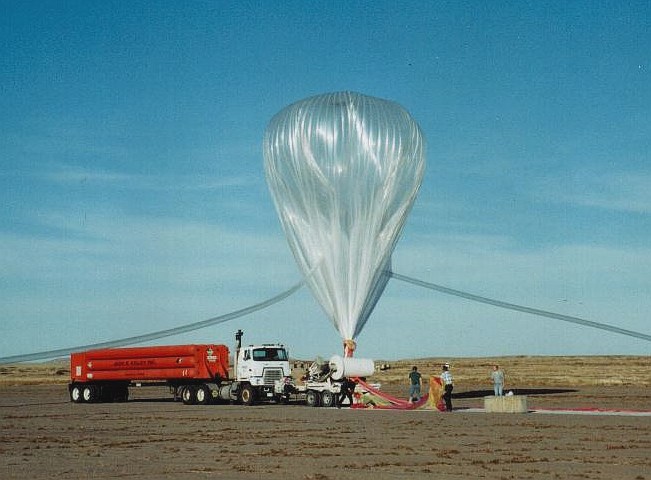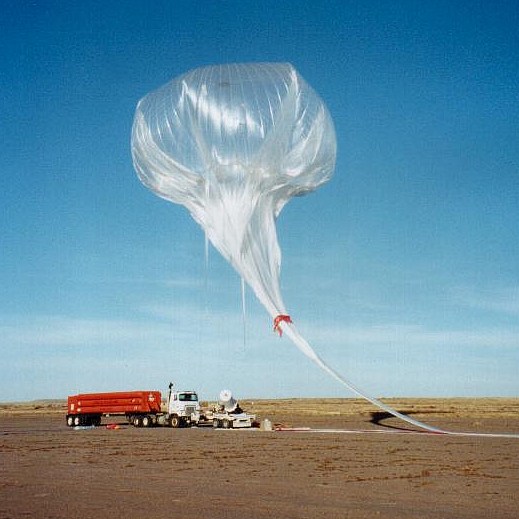Purpose of the flight and payload description
The QMAP balloon-borne telescope was designed and built by the Department of Physics of Princeton University with the collaboration of the Department of Physics of the University of Pennsylvania to make a map of the cosmic microwave background (CMB) anisotropy. It consisted of a cryogenic receiver, primary and secondary optics, pointing system, and data acquisition system.
The receiver, which was cooled with liquid helium to 2.3 K in flight, has four feed horns: one at the Ka band (31 GHz) and two at the Q band (42 GHz), each with 6-7 GHz of bandwidth. Each Ka-band and Q-band feed horn has two high electron mobility transistor (HEMT)- based amplifiers, one in each polarization. To account for the variable temperature and consequential gain drifts of the receiver, a thermally stabilized noise source calibrated all HEMT channels every 100 seconds with a 54 milliseconds pulse.
The telescope optics were similar to those used for three ground-based CMB observations in Saskatoon, Saskatchewan, Canada. The telescope was mounted on an attitude-controlled balloon platform. The beams were formed by cooled, corrugated feeds that underilluminated an ambient temperature, 0.85 m off-axis parabolic reflector that, in turn, underilluminated a 1.8 x 1.2 m chopping flat mirror. Each beam for Ka and Q bands pair was orthogonally linearly polarized, with the odd elements polarized in the horizontal direction. The beams were moved on the sky rapidly (~4.7 Hz) by the computer-controlled 1 x 1.6 m resonant chopping flat, which required 20 Watts to operate. The output of the detectors were AC-coupled and sampled 160 times during each chopper cycle. This rate was intended to oversample the sky adequately when the beam was moving at its fastest rate.
The telescope was located inside a large aluminum ground screen that was fixed with respect to the receiver and parabola. The gondola was small, lightweight (570 kg), and rugged.
The attitude control system obtained primary pointing information from either a magnetometer or a CCD-based star camera. When in CCD mode, the centroid of the chosen guide star in the CCD field was found in real time. The deviation from the target position was minimized by controlling the torque applied to a reaction wheel at the bottom of the gondola. Since the Ka/Q-band receivers were relatively insensitive to pendulation-induced atmospheric signals, no active elevation stabilization was required.
QMAP was the first experiment to use an interlocking scan strategy to directly produce high signal-to-noise CMB maps. After the second flight in November 1996, the QMAP gondola was adapted for ground based work as the MAT/TOCO experiment. Observations were made from 5200 meters on Cerro Toco in Northern Chile in 1997 and 1998.
Details of the balloon flight
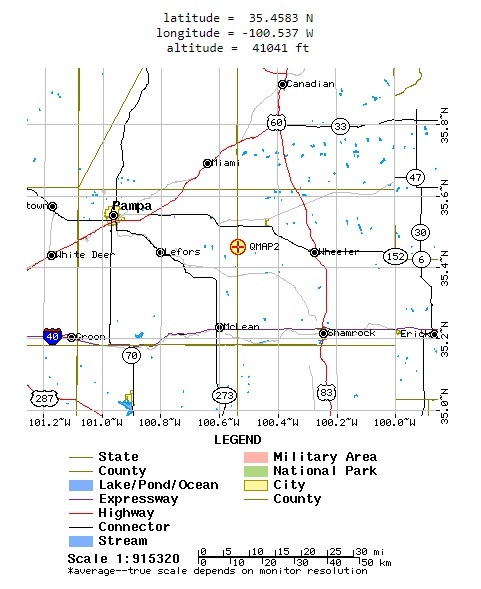
Balloon launched on: 11/8/1996
Launch site: Scientific Flight Balloon Facility, Fort Sumner, (NM), US
Balloon launched by: National Scientific Balloon Facility (NSBF)
Balloon manufacturer/size/composition: Zero Pressure Balloon Raven 4.0 - 113.000 m3
Balloon serial number: R4.001-1-08
Flight identification number: 426N
End of flight (L for landing time, W for last contact, otherwise termination time): 11/10/1996 at 12:54 utc
Balloon flight duration (F: time at float only, otherwise total flight time in d:days / h:hours or m:minutes - ): 14 h 30 m
Landing site: 10 miles of Shamrock, Texas, US
Payload weight: 2691 lbs
The balloon was launched on November 10 at 23:05 UT by dynamic method using launch vehicle. The gondola reached its float altitude of 30 km two hours later and stayed at float until 12:55 UT. Science and calibration data were taken between 01:00 and 12:10UT, all during the night. The flight was terminated 350 km east, near Shamrock, Texas.
External references
- Comparing and combining the Saskatoon, QMAP, and COBE CMB maps Phys. Rev. D 63, 103002 - Published 19 April 2001
- Galactic Contamination in the QMAP Experiment The Astrophysical Journal Letters, Volume 542, Number 1
- Mapping the Cosmic Microwave Background Anisotropy:Combined Analysis of QMAP Flights The Astrophysical Journal, Volume 509, Issue 2, pp. L77-L80
- Mapping the Cosmic Microwave Background Anisotropy:The Second Flight of the QMAP Experiment The Astrophysical Journal Letters, Volume 509, Number 2
- NASA Balloon Flights (1989-1998) in NASA Historical Data Book, Vol. VII: NASA Launch Systems, Space Transportation, Human Spaceflight, and Space Science, 1989-1998
- QMAP website Princeton University
- The Flip Side of the Universe Scientific American, 279(3), 22
- The QMAP and MAT/TOCO Experiments for Measuring Anisotropy in the Cosmic Microwave Background The Astrophysical Journal Supplement Series, 140:115-141, 2002
- The QMAP information page Details of the experiment and data reduction/analysis
562If you consider this website interesting or useful, you can help me to keep it up and running with a small donation to cover the operational costs. Just the equivalent of the price of a cup of coffee helps a lot.

